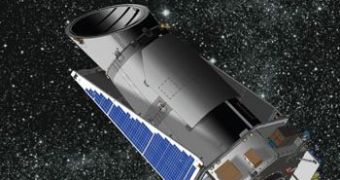The telescope launched in 2009 has indeed spotted several hundred planets that could be “Earth-like”, but only confirmed five of them, beyond our solar system. The confusion apparently came after a videotaped speech given in July by Kepler's co-investigator, Dimitar Sasselov at a TED (Technology Entertainment and Design) conference.
Several newspapers headlined this week that more than 100 “Earth-like” planets have been discovered by the Kepler telescope. Now scientists specify to SPACE.com that Sasselov was only referencing to possible planets among the Kepler database.
David Koch, the mission's deputy principal investigator at NASA's Ames Research Center in Moffett Field, California says that the talk was only about “candidates”. “These have the apparent signature we are looking for, but then we must perform extensive follow-up observations to eliminate false positives, such as background eclipsing binaries. This requires substantial amounts of ground-based observing which is done primarily in the summer observing season.”
What the Kepler telescope looks for are stars whose light fades periodically, because this is indication that one or several planets gravitate around it. These information can be found in Kepler's science principal investigator William Borucki's scientific paper.
Sasselov stated: “In my TED talk I was simply repeating what was already announced by the Kepler team back [on] June 15, 2010 and is in the Borucki et al., paper. So, no new news here — but more to come later in the year!” he added.
Last month, Kepler discovered 706 planets, possible candidates that seem to be alien worlds. Among these planets, many seem to be like ours, rather small and rocky. However Koch stressed that “other than the 5 planets previously published, we have not announced anything else.”
Sasselov explained that even before confirming favorable planets among candidates, scientists see statistically that “the smaller-sized planets will be more common than the large-sized (Jupiter- and Saturn-like ones) in the sample.”
As scientists hope to one day find a planet that can support life just like the Earth, Kepler's findings are rather encouraging, even if most spotted planets were gas giant variety.

 14 DAY TRIAL //
14 DAY TRIAL //